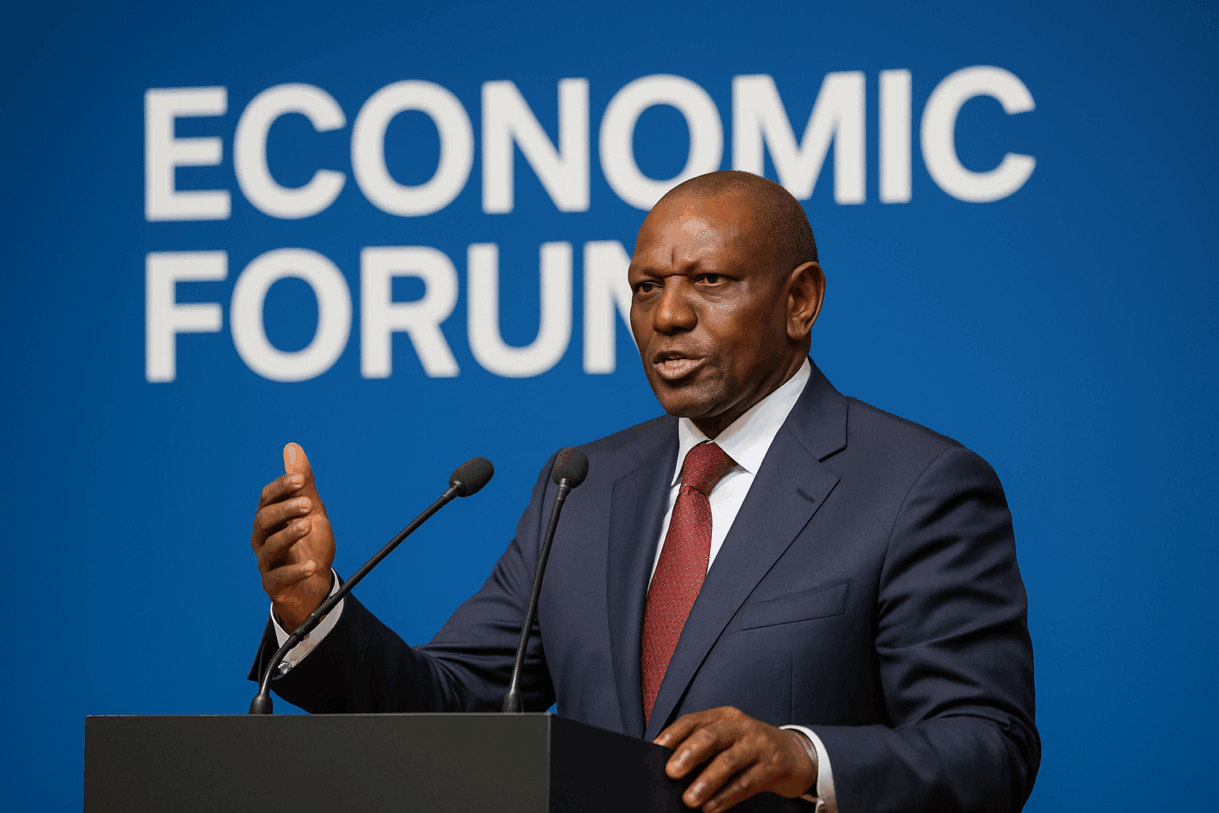
simply amazing, always for you.
Three Years Into the Ruto Presidency
In September 2022, William Ruto was sworn in as the President of Kenya after a closely contested election. He entered office with a bold promise to rebuild the economy from the bottom up — a model he branded as Bottom-Up Economic Transformation Agenda (BETA). This vision was meant to prioritize ordinary citizens, small businesses, farmers, and youth who felt excluded from previous trickle-down economic approaches.

Three years later, the nation stands at a crucial checkpoint. The hashtag RutonomicsAt3 has sparked intense debate, with supporters pointing to infrastructure progress and digital innovation, while critics highlight skyrocketing costs of living, rising taxes, and public debt concerns.
This article takes a comprehensive, non-partisan look at what “Rutonomics” has delivered — and where it has fallen short. We will analyze the policies, their impact on different sectors, public sentiment, and the broader economic outlook as Kenya enters the second half of Ruto’s term.
Chapter 1: The Bottom-Up Promise — What Ruto Campaigned On
The BETA Blueprint
Ruto’s campaign pitch was anchored in the Bottom-Up Economic Transformation Agenda, a five-pillar plan promising:
- Boosting agricultural productivity and food security
- Supporting small and medium enterprises (SMEs) through access to credit
- Creating jobs through industrialization and digital economy
- Affordable healthcare through the National Health Insurance Fund reforms
- Housing and settlement development through affordable housing programs
This agenda sought to empower hustlers — the informal workers, boda boda riders, mama mbogas, and youth job seekers — whom he argued had long been ignored by elite-driven economic policies.
The Hustler Fund Launch
In December 2022, Ruto launched the Hustler Fund, offering small digital loans to micro-entrepreneurs. The fund became the flagship of his bottom-up vision, promising to replace predatory shylocks and digital lenders with affordable government-backed credit.
Chapter 2: Economic Growth — Numbers and Reality
GDP Growth Trends
Between 2022 and 2025, Kenya National Bureau of Statistics data shows moderate growth averaging about 5 percent annually. This is comparable to regional peers, yet slightly below the ambitious 6-7 percent target in the BETA blueprint.
However, GDP growth has been uneven. The services sector, especially ICT and finance, has expanded, while manufacturing remains stagnant. Agriculture, which employs most Kenyans, has faced drought shocks and rising input costs, slowing rural incomes.
Debt and Fiscal Pressures
Ruto inherited a heavy public debt load from the previous Uhuru Kenyatta administration. Public debt surpassed 70 percent of GDP by 2022. Servicing this debt has consumed nearly 60 percent of government revenues, squeezing funds for development projects.

To manage this, the administration increased taxation, particularly through the Finance Act 2023 and Finance Act 2024, which raised VAT on fuel, introduced new levies on salaries, and broadened the tax base to the informal sector. These moves improved revenue collection but worsened the cost of living and public discontent.
Chapter 3: The Cost of Living Crisis — The Greatest Thorn in Rutonomics
Inflation and Basic Commodities
From 2022 to 2024, inflation consistently hovered between 7–9 percent. Prices of basic goods — maize flour, sugar, cooking oil, and fuel — surged beyond the reach of many households. While global supply shocks played a role, many Kenyans blame government over-taxation and weak price controls.
The government introduced fertilizer subsidies to lower food prices, but the impact was delayed and limited to certain counties. Urban dwellers and informal workers have felt the pinch most.
Pesa Mfukoni: The Missing Money in People’s Pockets
The phrase PesaMfukoni has become a rallying cry of public frustration. Many Kenyans argue that while macroeconomic indicators might look stable on paper, disposable income has shrunk.
Salaries remain stagnant, job creation is slow, and taxes are biting deeper. For many, the lived experience of Rutonomics is one of empty wallets.
Chapter 4: Jobs and Youth — The Unfulfilled Promise
Unemployment Trends
Youth unemployment remains alarmingly high, with estimates placing it around 35 percent. Many young people are stuck in low-paying informal work or remain jobless altogether.
While the government launched digital job programs and encouraged online work platforms, uptake has been modest and concentrated in urban centers.
Labor Export Policies
To reduce local job pressure, the administration signed bilateral labor export deals with countries like Saudi Arabia, Germany, and Canada. While thousands of Kenyans have secured jobs abroad, concerns about worker exploitation and brain drain persist.
Chapter 5: Housing, Infrastructure, and Flagship Projects
Affordable Housing Drive
Ruto’s government launched an ambitious Affordable Housing Program under the State Department for Housing and Urban Development, aiming to build hundreds of thousands of units nationwide.
A housing levy deducted from workers’ salaries funds the program. While groundbreaking ceremonies abound, actual completed units remain far below target.
Critics accuse the government of prioritizing ribbon-cutting over results, while supporters argue housing is a long-term investment that will stimulate construction jobs.
Roads, Rail, and Digital Infrastructure
Major infrastructure projects, especially roads, have continued, though at a slower pace due to debt constraints. Investments in ICT infrastructure, fiber networks, and the Kenya National Digital Highway have expanded internet access — a notable achievement under Rutonomics.
Chapter 6: Agriculture and Food Security
Agriculture is the backbone of Kenya’s economy and a key BETA pillar. The government rolled out subsidized fertilizer programs and revamped irrigation schemes.
Positive signs:
- Improved maize harvests in 2024
- Growth in dairy and horticultural exports
- Rollout of farmer e-voucher subsidy systems
Challenges:
- Climate shocks and droughts disrupted yields
- High cost of fuel, seeds, and machinery
- Limited market access and post-harvest losses
While the sector shows gradual recovery, most small farmers say returns remain too low to lift them from poverty.
Chapter 7: Health and Education Under Rutonomics
Healthcare Reforms
The administration introduced universal health coverage reforms replacing the old National Health Insurance Fund with new social health schemes under the Social Health Authority.
The goal is to reduce out-of-pocket health costs, but rollout has been chaotic, with delays in hospital reimbursements and confusion among the public.
Education Investment
Spending on basic education has increased, and the Competency-Based Curriculum (CBC) has been gradually implemented. However, teacher shortages, infrastructure gaps, and rising university fees have sparked discontent.
Student loan reforms through the Higher Education Loans Board aimed to improve financing, but delays and bureaucratic hurdles remain common.
Chapter 8: Taxation and Public Backlash
Nothing has defined Rutonomics more than its aggressive tax expansion drive. The Finance Act 2023 and Finance Act 2024 introduced:
- VAT on fuel from 8% to 16%
- Housing levy on salaries
- New digital content tax
- Minimum tax on SMEs
- Higher PAYE for top earners
While the Kenya Revenue Authority has improved collections, public resentment has soared. Many see the government as overtaxing a shrinking economy, squeezing both businesses and households.
Protests, especially by youth groups, have labeled the administration as tax-hungry but service-poor.
Chapter 9: Public Sentiment — Divided Nation
Social media trends like ThreeYearsOfProgress, KenyaInasongaMbele, and MaendeleoNaRuto reflect government messaging, while counter-tags like PesaMfukoni highlight public frustration.
Opinion polls show Ruto’s approval ratings declining steadily through 2024 and 2025, largely due to economic grievances. Yet, a loyal base credits him for taking tough fiscal medicine after years of borrowing excess.
The nation is split between those who see short-term pain as necessary for long-term gain, and those who see Rutonomics as simply mismanaged austerity.
Chapter 10: Regional and Geopolitical Positioning
Despite domestic woes, Ruto has raised Kenya’s diplomatic profile. He has courted investments from United States, China, United Arab Emirates, and European Union blocs, pitching Kenya as an African tech and logistics hub.
However, critics argue foreign pledges rarely translate into local jobs fast enough, and often come as loans that deepen debt.
Chapter 11: The Verdict on Rutonomics So Far
Successes:
- Improved tax collection efficiency
- Expansion of digital infrastructure
- Steps toward universal healthcare
- Revitalization efforts in agriculture
- Raised Kenya’s international economic profile
Failures:
- Persistently high cost of living
- Weak job creation and youth unemployment
- Public debt stress and heavy taxation
- Slow delivery of housing and infrastructure
- Erosion of public trust due to overpromising
Chapter 12: The Road Ahead — What Ruto Must Do
To salvage his economic legacy before 2027, Ruto must:
- Tame taxation pressure: Focus on broadening the tax net via formalization rather than raising existing rates.
- Cut wasteful spending: Demonstrate fiscal discipline and reduce corruption leakages.
- Prioritize job creation: Incentivize private sector hiring, apprenticeships, and manufacturing investment.
- Accelerate housing and healthcare delivery: Show real outcomes, not just launches.
- Improve public dialogue: Rebuild trust through transparency, citizen feedback, and consistent messaging.
Three Years On, The Jury Is Still Out
Three years into Rutonomics, Kenya stands at a crossroads. The bottom-up dream remains alive in rhetoric but shaky in reality. Ruto has made strides in digitalization, agriculture recovery, and fiscal discipline, but these gains are overshadowed by empty pockets, joblessness, and public frustration.
As the hashtag RutonomicsAt3 trends across X and other platforms, Kenyans are asking one question:
Has the pain been worth it?
The answer will shape not just Ruto’s legacy, but Kenya’s economic future for years to come.
SUGGESTED READS
- The Untold Story of Africa’s First Scholars: The Legacy of Timbuktu and the Rise of Literacy on the Continent
- Understanding the 2022 Kenyan Elections: Have We Learned from the Past?
- Kibaki vs. Raila: A Timeline of Political Rivalry and National Impact
- The Role of the International Criminal Court in African Conflicts
- Politics, Power, and Gangs: The Hidden Underbelly of Kenyan Elections

Support Our Website!
We appreciate your visit and hope you find our content valuable. If you’d like to support us further, please consider contributing through the TILL NUMBER: 9549825. Your support helps us keep delivering great content!
If you’d like to support Nabado from outside Kenya, we invite you to send your contributions through trusted third-party services such as Remitly, western union, SendWave, or WorldRemit. These platforms are reliable and convenient for international money transfers.
Please use the following details when sending your support:
Phone Number: +254701838999
Recipient Name: Peterson Getuma Okemwa
We sincerely appreciate your generosity and support. Thank you for being part of this journey!
